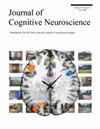Goal Shifts Structure Memories and Prioritize Event-defining Information in Memory
IF 3.1
3区 医学
Q2 NEUROSCIENCES
引用次数: 0
Abstract
Every day, we encounter far more information than we could possibly remember. Thus, our memory systems must organize and prioritize the details from an experience that can adaptively guide the storage and retrieval of specific episodic events. Prior work has shown that shifts in internal goal states can function as event boundaries, chunking experiences into distinct and memorable episodes. In addition, at short delays, memory for contextual information at boundaries has been shown to be enhanced compared with items within each event. However, it remains unclear if these memory enhancements are limited to features that signal a meaningful transition between events. To determine how changes in dynamic goal states influence the organization and content of long-term memory, we designed a 2-day experiment in which participants viewed a series of black-and-white objects surrounded by a color border on a two-by-two grid. The location of the object on the grid determined which of two tasks participants performed on a given trial. To examine if distinct types of goal shifts modulate the effects of event segmentation, we changed the border color, the task, or both after every four items in a sequence. We found that goal shifts influenced temporal memory in a manner consistent with the formation of distinct events. However, for subjective memory representations in particular, these effects differed by the type of event boundary. Furthermore, to examine if goal shifts lead to the prioritization of goal-relevant features in longer lasting memories, we tested source memory for each object's color and grid location both immediately and after a 24-hr delay. On the immediate test, boundaries enhanced the memory for all concurrent source features compared with nonboundary items, but only if those boundaries involved a goal shift. In contrast, after a delay, the source memory was selectively enhanced for the feature relevant to the goal shift. These findings suggest that goals can adaptively structure memories by prioritizing contextual features that define a unique episode in memory.目标转移构建了记忆,并在记忆中优先考虑事件定义信息。
每天,我们遇到的信息远远多于我们可能记住的信息。因此,我们的记忆系统必须对经历中的细节进行组织和优先排序,以适应性地指导特定情节事件的存储和检索。先前的研究表明,内部目标状态的变化可以作为事件的边界,将经验分成不同的、令人难忘的事件。此外,与每个事件中的项目相比,在短时间的延迟中,人们对边界处上下文信息的记忆会得到增强。然而,目前还不清楚这些记忆增强是否仅限于事件之间有意义过渡的特征。为了确定动态目标状态的变化如何影响长时记忆的组织和内容,我们设计了一个为期两天的实验。物体在网格上的位置决定了参与者在特定试验中执行的两项任务中的哪一项。为了研究不同类型的目标转移是否会调节事件分割的效果,我们在一个序列中每四个项目之后改变了边框的颜色、任务或两者。我们发现,目标转移对时间记忆的影响与不同事件的形成方式一致。然而,特别是对主观记忆表征而言,这些影响因事件边界的类型而异。此外,为了研究目标转移是否会导致目标相关特征在更持久记忆中的优先级,我们在即时和延迟 24 小时后测试了对每个物体的颜色和网格位置的源记忆。在即时测试中,与无边界项目相比,边界增强了对所有并发源特征的记忆,但前提是这些边界涉及目标转移。相反,在延迟之后,源记忆会选择性地增强与目标转移相关的特征。这些研究结果表明,目标可以通过优先选择定义记忆中独特情节的上下文特征来适应性地构建记忆。
本文章由计算机程序翻译,如有差异,请以英文原文为准。
求助全文
约1分钟内获得全文
求助全文
来源期刊
CiteScore
5.30
自引率
3.10%
发文量
151
审稿时长
3-8 weeks
期刊介绍:
Journal of Cognitive Neuroscience investigates brain–behavior interaction and promotes lively interchange among the mind sciences.

 求助内容:
求助内容: 应助结果提醒方式:
应助结果提醒方式:


